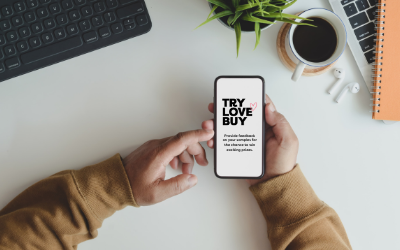A step by step guide to setting up a first-party data strategy
Major internet browsers like Safari and Firefox have already sunset 3rd party cookies. Google is set to do so in 2024. Marketers who have relied on targeting digital adverts by search history will need to get to grips with different strategies.
First-party data capture and loyalty programs have been around for a very long time. There was a fear of restrictions from GDPR in 2018 which led to a lack of confidence in collecting and managing first-party data for many businesses. With a few years of working within GDPR frameworks under our belts and the impact of third-party cookie removal imminent, it may be time to re-engage with this classic marketing strategy.
Creating a first-party data strategy and a customer loyalty program is a strategic process that can help your business build stronger relationships with your customers, gather valuable customer data, and increase customer retention.
Here’s a step-by-step guide on how to create both:
First-Party Data Strategy
1. Define Your Objectives
Start by clarifying your goals. What do you want to achieve with your first-party data strategy? This could include improving customer insights, personalisation, and customer engagement.
2. Data Collection
Identify all the touchpoints where you interact with your customers, both online and offline. These touchpoints can include your website, direct mail, mobile app, social media, product sampling and in-store interactions. Ensure that you are legally and ethically collecting data.
3. Data Segmentation
Segment your customer data to create meaningful groups. This allows for more personalised marketing and tailored loyalty programs. Common segmentation criteria include demographics, purchase history, and behaviour. You may want to create nursery journeys for recent sign-ups or have different content for established brand advocates. More on customer loyalty below.
4. Data Governance and Privacy
Ensure that your data collection and storage comply with relevant data protection laws, such as GDPR. Make sure to obtain explicit consent for data collection and have a clear privacy policy. You can also work with trusted suppliers like Relish Agency who can collect and manage data in accordance with GDPR.
5. Data Analysis
Use data analytics tools to gain insights from your first-party data. This can help you understand customer behaviour, preferences, and trends. You can enrich first party data with zero-party data, this is direct customer opinion or behaviour collected from surveys, polls, quizzes or UX trends. Relish Agency can help you with zero-party data collection and enrichment through our survey solution Try.Love.Buy
6. Personalisation
Implement personalisation in your marketing efforts. Use the data you’ve collected to provide tailored product recommendations, content, and offers to your customers.
Customer Loyalty Program:
Once you have collected first-party data and begun a regular communication plan, you may then want to embark on a customer loyalty program to retain customers and incentivise prospects. We list below some common components of a customer loyalty plan:
1. Set Clear Objectives
Determine what you want to achieve with your loyalty program, such as increasing customer retention, boosting customer lifetime value, or improving brand loyalty.
2. Segment Your Customers
As mentioned earlier, use your first-party data to segment your customers. This will allow you to create different loyalty tiers or customise rewards based on customer behaviour and preferences.
3. Choose Loyalty Program Type
Select the type of loyalty program that suits your business. Common types include points-based systems, tier-based systems, or subscription-based models.
4. Design Rewards
Create attractive and relevant rewards. These could include discounts, exclusive access, free products, or early access to new releases. Make sure the rewards match your customers’ preferences.
5. Loyalty Program Platform
Choose a suitable technology platform or software to manage your loyalty program. There are various software options available for this purpose.
6. Communication
Develop a communication strategy to inform your customers about the loyalty program. Use various channels like email, social media, and in-app notifications.
7. Data Integration
Integrate your loyalty program with your first-party data strategy. Use the customer insights you’ve gathered to personalise loyalty program offers and recommendations.
8. Testing and Optimisation
Continuously monitor and optimize your loyalty program. Collect feedback from customers and make adjustments based on their input.
9. Promotion and Engagement
Regularly promote the benefits of your loyalty program and encourage customer engagement. Consider running special promotions or events for loyalty program members.
10. Measurement and Analysis
Track the effectiveness of your loyalty program by analysing metrics like customer retention, increased sales, customer satisfaction and customer lifetime value (CLV)
Conclusion
Remember that both your first-party data strategy and your loyalty program should be customer-centric. They should aim to enhance the customer experience and build long-term relationships with your audience. It’s also crucial to stay up-to-date with changes in data privacy regulations and evolving customer preferences to adapt your strategies accordingly.
You can also work with trusted partners. Relish Agency have facilitated the promotion and capture of numerous first-party schemes. If you would like to hear about how Relish can help you with your product sampling strategy, or other channels to suit your business, drop us a message or give us a call on 01173751160. Alternatively send us an email at team@relishagency.com







